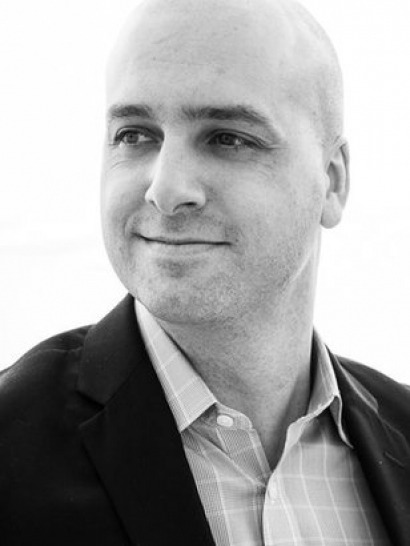
Following the announcement of a new partnership between CleanCapital and Generate Capital, aimed at enabling the acquisition of $300 million in operating clean energy assets, Thomas Byrne, CEO of CleanCapital, clarifies some points about financing clean energy and what the new partnership means with regard to development of new clean energy projects.
CleanCapital and Generate Capital have just announced a partnership to enable the acquisition of $300 million in operating clean energy assets, focusing primarily on distributed solar projects. According to a CleanCapital press release, the deal will bring much-needed liquidity to the distributed solar market, providing project owners access to permanent, flexible capital and exit opportunities in an otherwise limited market. It involves something called a ‘warehouse facility’, which has the capacity to acquire $300 million in operating clean energy projects with a near-term focus on distributed solar. It also provides CleanCapital with the flexibility to acquire assets while also offering investment opportunities through its state-of-the-art innovative investment platform and alongside a trusted industry partner, Generate Capital.
All this sounds impressive, but some of the financial terminology might prove to be a little confusing to some, so REM talked to Thomas Byrne to help explain some brief points what is going on here and how developers raise capital to finance new projects.
What is CleanCapital and what does it do:
CleanCapital is financial technology platform that is making it simpler to invest in clean energy. We launched in early 2016 and have acquired more than $20M of deals to date. Our last investment included investments from family offices, individuals, and John Hancock Life Insurance Company.
Can you explain a bit more about the importance of various financial arrangements within the clean energy sector, how they work and what they are designed to achieve?
Clean energy needs more capital in it and more institutional investment products. In order to achieve necessary scale, clean energy needs mainstream capital sources and capital structures.
CleanCapital delivers “acquisition capital” which almost always goes into new projects – how do companies normally go about raising capital for this purpose?
The particular market segment we are focused on right now - operating distributed solar - lacks many liquidity options because of deal size and complexity. We are filling that gap.
You state you are “bringing liquidity to the distributed solar market”, can you just explain briefly what that means?
Bringing liquidity to the market means we are providing capital to developers for their projects. The ability to sell the project make the asset more "liquid" instead of being stuck with an "illiquid" asset. Again, that means money in the pocket of developers, and more capital being reinvested in clean energy. [In essence, ‘liquid’ refers to the ability to transfer hard assets to cash or the state of being in a position where one has sufficient cash on hand to accommodate any and all necessary financial obligations.]
What does the partnership with Generate Capital involve? In what way will it result in the development of more clean energy projects?
The partnership will provide liquidity for project owners. This puts money in the pocket for developers to invest in new projects.
What is a ‘warehouse facility’?
It is a source of capital that we can use to rapidly make acquisitions.
According to Jigar Shah, President of Generate Capital, “Distributed energy resources are a critical component of the future electric grid but to date the investment opportunities have been limited”. What did he mean by that?
The clean energy asset class, generally, has yet to attract the same investment capital as other asset classes (like real estate and infrastructure). CleanCapital is committed to changing that, and attract more investors to the space.
When developers talk about “exiting their investments”, what do they mean and how does this process benefit the sector?
Exiting investments means selling the projects that they own; selling a project provides developers with money to reinvest in new projects. Redeploying that capital elsewhere is fundamental to growing their respective businesses and the sector more broadly.
If rapid transition to a clean energy economy requires broader participation from the investment community, how can that be achieved?
We need to make investing in clean energy simpler and more understandable.
CleanCapital delivers technology solutions to all aspects of the transaction process - from lending to capital raising, origination to diligence. The company identifies, screens and manages clean energy projects for investors, expanding the clean energy market that until now has been limited to only a handful of institutional investors, banks, private equity firms, and tax equity investors. It brings a streamlined approach that facilitates access to safe and secure opportunities to invest in low-risk, cash flowing assets. The company provides a simple and understandable way to invest in clean energy, thereby facilitating access to billions of dollars of untapped capital sources that have been searching for opportunities in the sector. This enables accredited investors—including institutional investors, family offices, and investment funds—to invest in secure and diversified clean energy projects. Investors can monitor investments in real-time using the company’s seamless online platform. CleanCapital was founded in 2015 and is headquartered in New York.
Generate Capital is a specialty finance company based in San Francisco, California, founded by leaders in the renewable energy, technology, finance and sustainability sectors. The company partners with project developers and technology manufacturers globally to finance proven solutions for the ‘Resource Revolution’ – doing more but utilising less critical resources like energy, water, food and materials. After financing billions in innovative infrastructure, the company’s President, Jigar Shah, with the company’s co-founders, created the company’s novel model to fill a funding gap and to advance proven solutions required to build a resource-efficient economy. The partnership with CleanCapital is aimed at bringing a trusted, robust solution to a historically illiquid sector.
For additional information:

